For many, gardening is a warm weather activity. As soon as spring rolls around, the shovels and seeds come out. It’s a time for long strolls through the garden center and cleaning dirt out from under my fingernails!
Okay, but what if I told you that you didn’t have to wait until spring to get busy in the garden? There are plenty of plants that like a little chill in the air. In fact, there are some that will bloom straight through the snow! You can still enjoy plenty of beauty, even when it’s too cold for some. There is no reason why your yard has to be dead and grey, even in the dead of winter.
Related: Check Out These Best Hacks for Gardening on a Budget
All of these perennials, annuals, and shrubs that flourish in winter provide more than just a pop of color. They also provide shelter for wildlife.
What will survive and thrive in your garden all depends on what zone you are in. Before planting new plants, always check out the USDA Plant Hardiness Zones Map to make sure you’re choosing the right plants for your location.
With many of these, they need to be planted in the ground before the ground freezes in your location. This gives them time to get established in their new spot. And if you’re planting shrubs or other perennials, be patient with them. It may take a few seasons before they really take off, becoming full and beautiful.
So without further ado, let’s take a look at some of the best cold-loving flowers to bring beauty to your garden!
Snowdrops
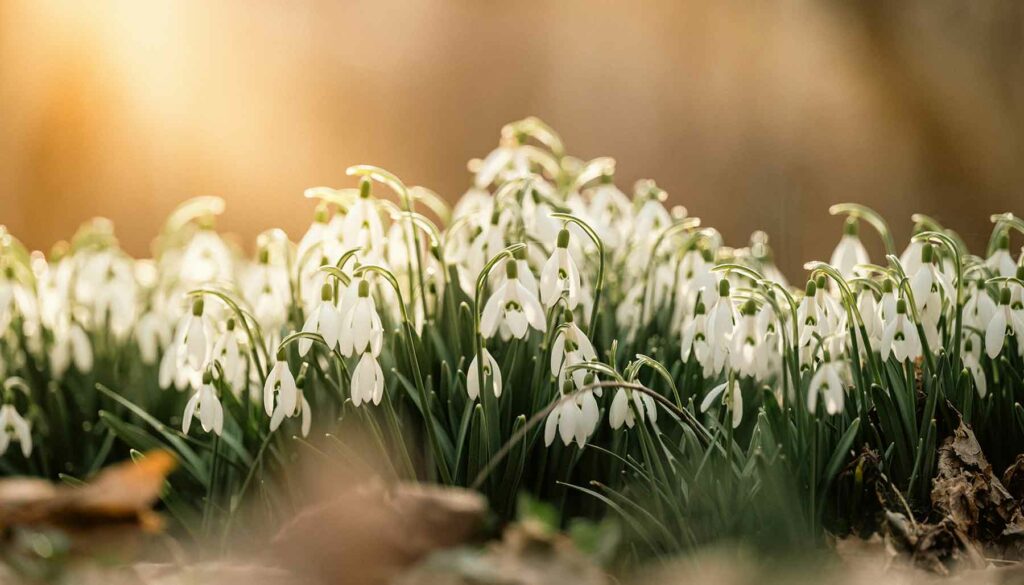
- USDA Hardiness Zones 3 to 7
- Full Sun to Part Shade
- Expected Height: 6 to 10 inches tall
Snowdrops have a charming look to them, thanks to their dainty, downturned blooms that resemble tiny bells. Despite their delicate look, they are really sturdy and resilient. They might even bloom beneath the snow if they have to! As an added bonus, snowdrops are deer and rabbit-resistant, too. There are different varieties of snowdrops, but you can expect most of them to pop up in very early spring before nearly any other flower. They make great borders along walkways or gardens.
Pansies
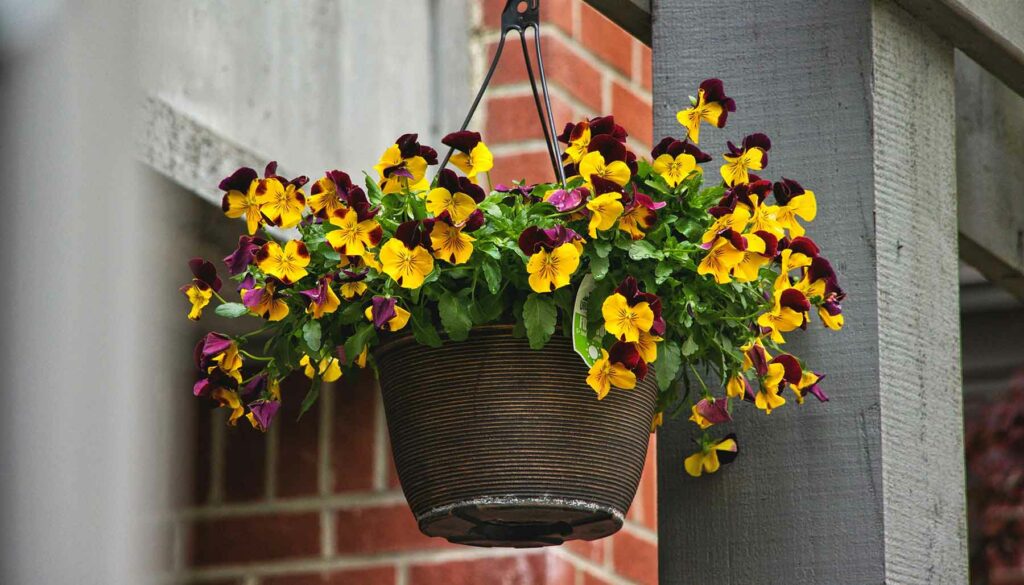
- USDA Hardiness Zones 2 to 9
- Full or Partial Sun
- Expected Height: 6 to 9 inches tall
Pansies will always remind me of winter because my mom planted them everywhere as soon as temperatures started to drop. Their cheery upturned face-like appearance is sure to brighten up any outdoor space when everything else is dormant. They come in tons of different colors, including purple, blue, red, white, orange, yellow, and pink. Some blooms are monochromatic, while others feature a mix of colors. Some are so dark they look almost black! You can depend on pansies to survive frost and bounce back. And if blooms do wither in extreme cold, the plants will stay alive to bloom again.
Related: Affordable Ways to Spruce Up Your Backyard Space
Crocuses
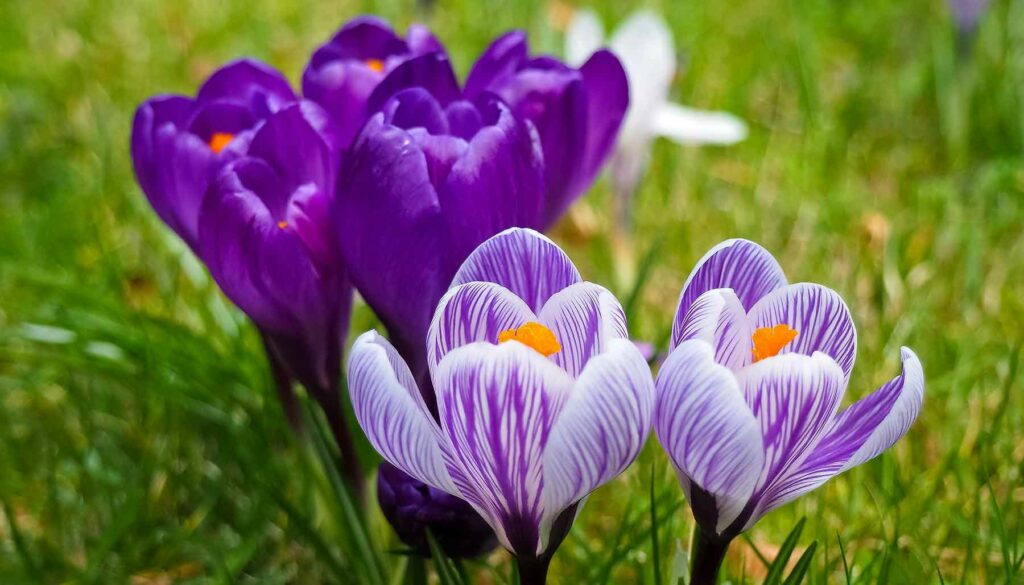
- USDA Hardiness Zones 3 to 8
- Full or Partial Sun
Pollinators will thank you for these early-blooming flowers! They will push through snow to bloom, adding a burst of color and attracting all those hungry bees waking up from hibernation. You can find crocuses in tons of different varieties. I say plant them all for a cheery rainbow of flowers. The corms (bulbs) need to be planted in the fall and experience winter’s cold to bloom, so make sure you get them in the ground before the first hard frost. Although they are mostly wildlife resistant, voles and squirrels might feed on the corms. This can also result in them popping up in random spots, as they “relocate” the corms for you!
Daffodils

- USDA Hardiness Zones 3 to 8
- Full or Partial Sun
- Expected Height: 6 to 20 inches tall
Daffodils might as well be the official sign that spring is about to arrive! Each year without fail, those cheery buttercups pop up – often in bigger numbers than the year before. They usually pop up and bloom well before the average last frost date, so they are definitely a call to warmer weather. I find they are definitely a bright sight after a dreary winter. If you are a beginner when it comes to gardening, daffodils are a great choice because they are extremely easy. You won’t have to do much to have them thrive. They will do alright in partial shade, but they really do best with at least six hours of sunlight.
Camellias

- USDA Hardiness Zones 7 to 9
- Full to Partial Sun
- Expected Height: 6 to 25 feet tall
Camellias do wonderfully in regions that experience mild winters, but new varieties are more cold-hardy. Depending on your location and the variety of camellia, you could see blooms from fall all the way to spring! These evergreen shrubs have lush foliage, and can grow to be quite large. This makes them excellent for hedges and larger background shrubs. Of course, the blooms are the showstoppers, and there are several different varieties to choose from. Some have flowers that are several inches wide, while others feature miniature blooms. You will find different petal shapes and colors ranging from white to deep red and everything in between.
Winter Jasmine
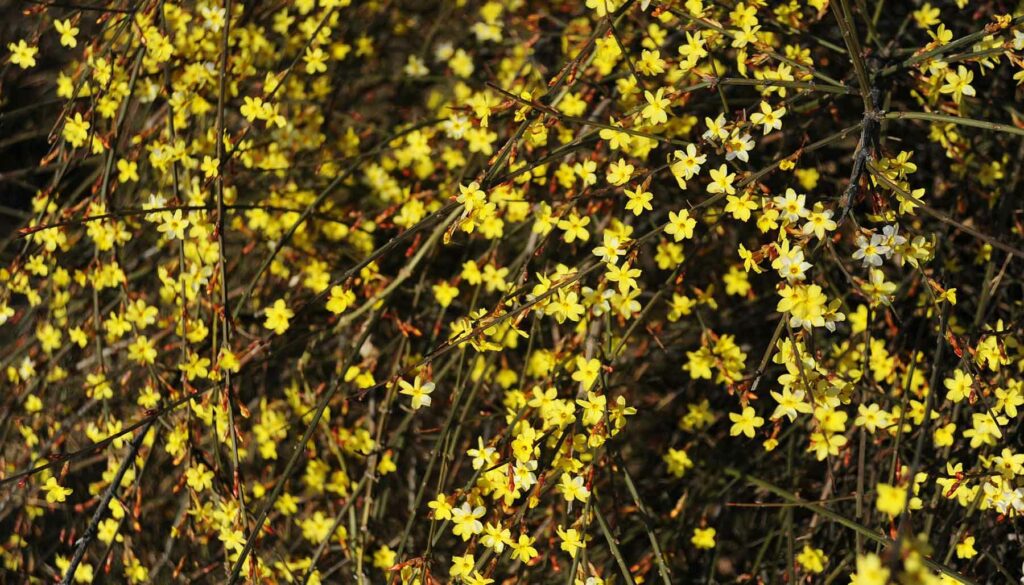
- USDA Hardiness Zones 6 to 10
- Full Sun or Partial Shade
- Expected Height: up to 4 feet as a shrub, 10 to 15 feet tall trained on a trellis or wall
Winter jasmine is a true showstopper when it blooms in late winter or early spring. These plentiful yellow blooms cover the thin, willowy stems of the plant. This one isn’t a true climbing plant, but it can be trained to climb like a vine. It also does great as ground cover or sprawling over walls and fences with its long branches. If you need something to fill a lot of space, winter jasmine might be the perfect fit, because it’s fast-growing and spreads with ease. Deer will mostly leave it alone, too. It can do well in partial shade, but you’ll get the most blooms in full sun.
Hellebores
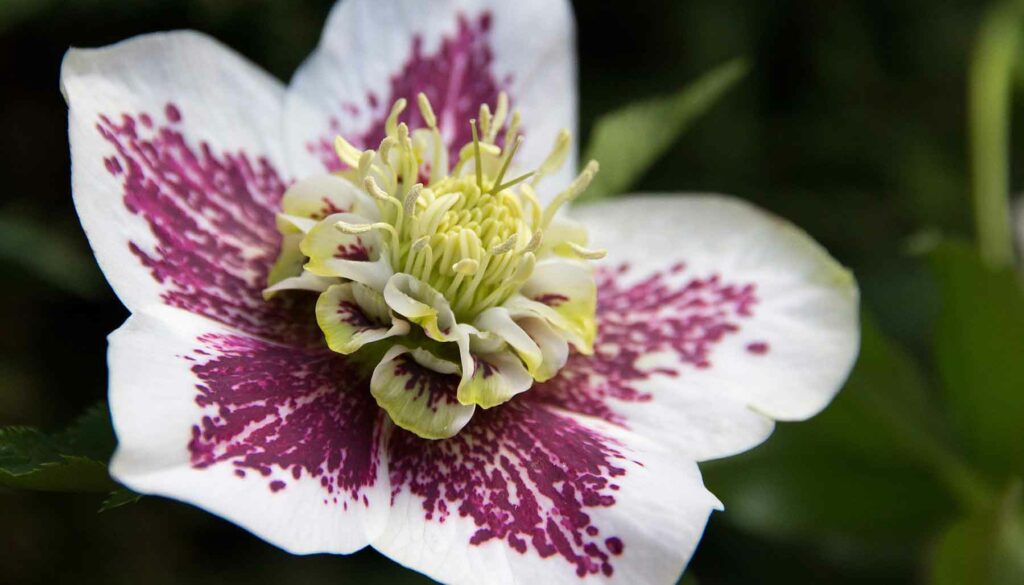
- USDA Hardiness Zones 4 to 9
- Partial Shade
- Expected Height: 9 to 18 inches tall
The hellebore is also sometimes called a Lenten rose because it often shows up around the time of Lent. You’ll see these pretty petals popping up in mid to late winter, depending on where you are located. Hellebores come in many different shades of pink, maroon, white, yellow, and purple. You can even find green or black blooms! There are several different species of these, so amp up the interest by planting different varieties. Don’t let their delicate appearance fool you, though. These perennials are tough and super cold-hardy. They are also resistant to deer, voles, and other animals looking for a snack.
Siberian Scilla
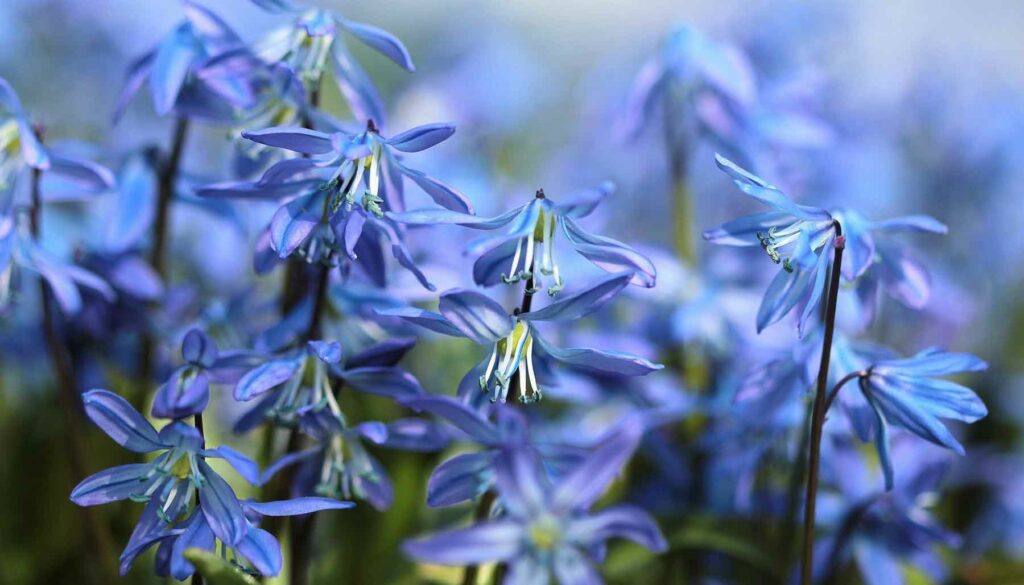
- USDA Hardiness Zones 2 to 8
- Full Sun or Part Shade
- Expected Height: 4 to 8 inches tall
If you are looking for something that will spread and come back year after year, the Siberian scilla is a great choice. This perennial naturalizes well, coming back year after year, and is easy to grow. The intense blue blooms will bring a welcome pop of color each year, sometimes before the snow has even melted. Stems have 2 to 5 flowers, and they pop up above grassy foliage. These cute little flowers work great as a border, thanks to their short height and multiple blooms. For extra interest, grow them en masse in beds, like a pretty blue carpet.
Ornamental or Flowering Cabbage and Kale

- USDA Hardiness Zones 2 to 11
- Full Sun
- Expected Height: anywhere from 6 to 36 inches tall, depending on variety
For a unique statement in your garden, look no further than ornamental cabbage and kale. These plants are also sometimes called flowering cabbage and kale. This plant features ruffled leaves drenched in reds, pinks, purples, and white. Ornamental kale is in the same plant family as brassicas like edible cabbage, broccoli, kale, and cauliflower. Technically this one is also edible, but it has a bitter flavor that isn’t exactly favored by people. That is why ornamental kale is best for adding color to your garden rather than to your plate. It thrives in cool weather and does best in sunny locations. This is where it will develop richer colors!
Winterberries
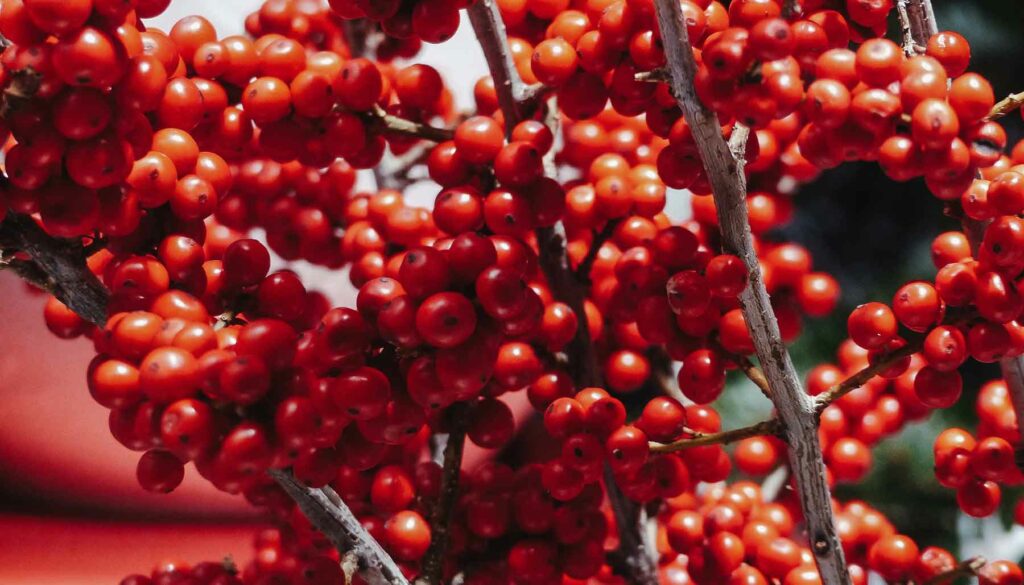
- USDA Hardiness Zones 3 to 9
- Full to Partial Shade
- Expected Height: 3 to 15 feet tall
I know that these technically aren’t flowers, but this will definitely add plenty of color to a dreary winter landscape. Although this deciduous shrub loses its leaves each fall, it still brings tons of interest to an otherwise barren winter landscape. That’s because after the leaves turn yellow and drop, you are left with a stunning view of thousands of bright red berries on all the stems. Of course, this shrub does bloom earlier in the year, with small inconspicuous flowers. But as you can assume from the name, it is definitely grown for the colorful berries. In order to get those beautiful berries, you have to have more than one winterberry holly: a male and a female plant.













